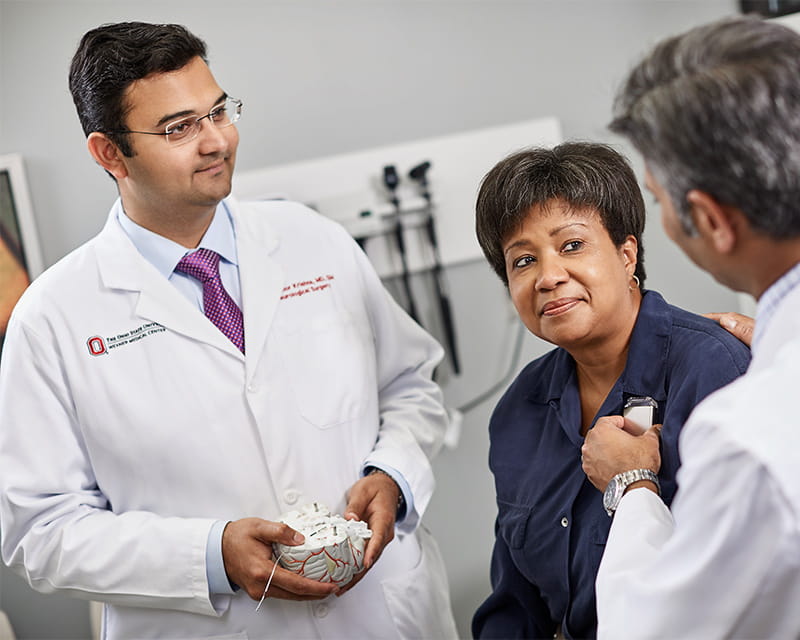
Novel research explores neurobiological mechanisms driving sarcopenia in aging

The Ohio State University Wexner Medical Center is one of a few centers worldwide shaping the future of MRI-guided, focused ultrasound technologies. With this capability, areas of the brain formerly accessible only with open surgery can now be treated without incisions.
“We’re at the forefront of delivering neurotherapeutics and modulating brain function in areas that are otherwise inaccessible,” says Ohio State neurosurgeon Vibhor Krishna, MD, SM. “We are developing protocols to test and implement this novel technology across a spectrum of neurological conditions.”
Surgeons are using ExAblate®, developed by Insightec, Inc., a transcranial ultrasound device that sends ultrasound waves through the scalp and skull. Magnetic resonance imaging allows them to guide intense ultrasound waves to a precise location during surgery.
High intensity focused ultrasound ablation is FDA approved for the treatment of essential tremor. Dr. Krishna and a multidisciplinary team of researchers at The Ohio State University Neurological Institute are studying focused ultrasound ablation for:
Epilepsy – Ohio State is leading this pilot study to assess the safety and feasibility of high intensity focused ultrasound ablation of the anterior thalamic nucleus in patients with epilepsy (secondary generalized seizures) not well controlled with medicine.
Parkinson’s disease – Ohio State is one of five centers across the United States evaluating focused ultrasound ablation of brain tissue in the globus pallidus to improve medically refractory dyskinesia symptoms or motor fluctuations for adults with advanced Parkinson’s disease.
The team is also investigating the ability of low intensity focused ultrasound to open the blood-brain barrier. This has potential for treating patients with Alzheimer’s disease, certain seizure disorders and brain tumors. Recent Alzheimer's disease research with animal models has demonstrated amyloid-β plaque clearance with targeted drug delivery in affected brain regions using low intensity focused ultrasound.
Dr. Krishna states, “We’re providing hope for patients not eligible for or unwilling to undergo existing interventions, and most importantly, we’re helping people who have diseases where no viable treatments currently exist.”